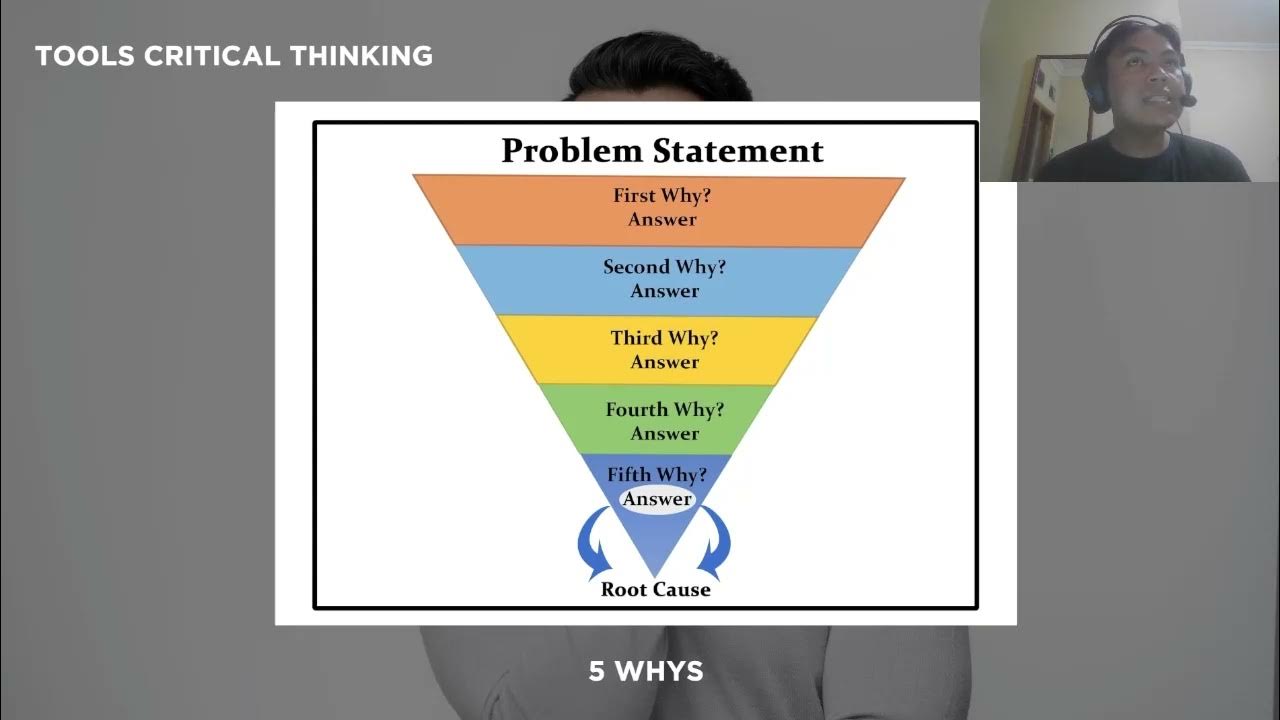ILMU BERPIKIR, TERNYATA KITA MASIH BANYAK BELUM MENGERTI, ILMU DALAM MENGAMBIL KEPUTUSAN TEPAT
Summary
TLDRThis video delves into the concept of thinking and its importance in decision-making. It introduces Edward De Bono's Six Thinking Hats, a method that encourages viewing problems from different perspectives. The six hats represent distinct thinking styles: White (facts), Red (emotions), Yellow (positivity), Black (critical thinking), Green (creativity), and Blue (organization). Through practical examples, the video shows how each hat can be used to analyze and solve problems effectively, highlighting the importance of well-rounded thinking in decision-making and innovation.
Takeaways
- 😀 Thinking is a process of connecting knowledge through dialectical reasoning, involving continuous questioning and answering.
- 😀 The quality of decision-making depends heavily on the information available, not just intelligence or ability.
- 😀 Edward De Bono's 'Six Thinking Hats' concept emphasizes using different mental perspectives to improve decision-making and creativity.
- 😀 Lateral thinking, or thinking outside the box, encourages solutions that might not be immediately obvious, as shown in the elevator mirror example.
- 😀 The White Hat represents neutral and objective thinking, focused on collecting and analyzing factual information and data.
- 😀 The Red Hat symbolizes emotional thinking, allowing intuition, feelings, and gut reactions to influence decisions.
- 😀 The Yellow Hat encourages positive thinking, focusing on potential benefits, opportunities, and constructive possibilities.
- 😀 The Black Hat represents critical thinking, helping to assess risks, weaknesses, and potential negative outcomes in a decision.
- 😀 The Green Hat fosters creativity and innovation, encouraging brainstorming and generating alternative ideas without worrying about their feasibility initially.
- 😀 The Blue Hat is for organizing the thinking process, ensuring that all the other hats are used effectively and in the right order.
- 😀 The Six Thinking Hats methodology offers a comprehensive approach to problem-solving by viewing issues from multiple perspectives and improving overall decision-making.
Q & A
What is the main idea behind the Six Thinking Hats method?
-The Six Thinking Hats method is a decision-making and problem-solving tool developed by Edward de Bono. It encourages individuals to approach a problem from six different perspectives, represented by metaphorical 'hats', each focusing on different modes of thinking such as facts, emotions, creativity, and risk analysis.
What does the White Hat represent in the Six Thinking Hats method?
-The White Hat represents objective thinking, focusing on facts, data, and information. It involves gathering relevant information without interpretation or bias.
How does the Red Hat contribute to decision-making?
-The Red Hat represents emotions, feelings, and intuition. It allows individuals to express their gut feelings and emotional reactions without needing logical justification. This helps in understanding the emotional aspects of decision-making.
What does the Yellow Hat focus on during the thinking process?
-The Yellow Hat focuses on positive thinking, benefits, and opportunities. It encourages optimism and looks for logical reasons why an idea or solution is worthwhile and feasible.
How is the Black Hat different from the Yellow Hat?
-The Black Hat represents critical thinking and risk assessment. It focuses on the potential problems, weaknesses, and negative aspects of an idea. In contrast, the Yellow Hat is focused on optimism and positive outcomes, balancing the more cautious approach of the Black Hat.
What is the role of the Green Hat in the Six Thinking Hats method?
-The Green Hat is used to encourage creative thinking and idea generation. It focuses on exploring alternative solutions, innovative ideas, and thinking outside the box, without worrying about feasibility at this stage.
Why is the Blue Hat important in the thinking process?
-The Blue Hat oversees the thinking process itself. It organizes and manages the use of other hats, ensuring that all perspectives are considered and guiding the group towards making a decision or solution.
Can all six thinking hats be used at once?
-No, each 'hat' represents a different mode of thinking, and it is typically used one at a time. However, all hats can be employed during a decision-making or problem-solving process, but they should be used in a structured manner to allow for clear thinking and analysis from multiple perspectives.
How does the Six Thinking Hats method improve problem-solving?
-By using the Six Thinking Hats method, individuals or groups can approach a problem from multiple viewpoints, ensuring that no aspect is overlooked. It helps identify opportunities, assess risks, generate creative ideas, and make informed decisions, improving overall problem-solving effectiveness.
What practical example illustrates the use of the Six Thinking Hats method in the transcript?
-A practical example provided in the transcript is Edward de Bono's story about a company with a slow elevator. Instead of focusing on expensive renovations, de Bono suggested installing mirrors in the elevator to distract employees, making them feel the elevator ride was faster. This creative solution reflects the Green Hat (creativity) and Yellow Hat (optimism) in action.
Outlines

このセクションは有料ユーザー限定です。 アクセスするには、アップグレードをお願いします。
今すぐアップグレードMindmap

このセクションは有料ユーザー限定です。 アクセスするには、アップグレードをお願いします。
今すぐアップグレードKeywords

このセクションは有料ユーザー限定です。 アクセスするには、アップグレードをお願いします。
今すぐアップグレードHighlights

このセクションは有料ユーザー限定です。 アクセスするには、アップグレードをお願いします。
今すぐアップグレードTranscripts

このセクションは有料ユーザー限定です。 アクセスするには、アップグレードをお願いします。
今すぐアップグレード関連動画をさらに表示

Critical Thinking | Learn the basics | How to get started

KUPAS TUNTAS LOGIKA: BAGAIMANA MELATIH PIKIRAN UNTUK BERPIKIR TAJAM DAN EFEKTIF

Menghidupkan Nurani dengan Berpikir Kritis | Materi PAI Kelas 12 SMA SMK

Ep. 2 | Kacamata Kritis: Melihat Lebih Dalam

Video Pembelajaran Pengantar Teknologi Informasi & Komunikasi Pertemuan 4

A origem da ansiedade e um exercício para reduzi-la | Italo Marsili
5.0 / 5 (0 votes)
